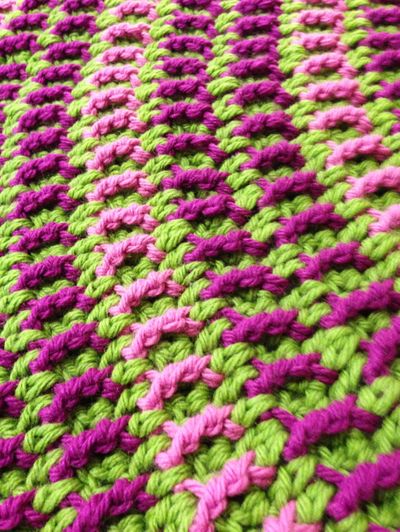New generation getting hooked on crocheting
Modern patterns, yarns help boost craft’s image

Crocheting these days is so much more than granny squares and chunky Afghan blankets.
It’s leaner and trendier than it was in the 1960s and ’70s, when the craft was known for its bulky, acrylic yarns. Crochet’s enduring popularity is due partly to today’s wide array of high-quality, luxurious yarns – many at affordable prices.
Crochet can be found on high-fashion runways and in upscale home decor.
But it also can just be fun: Mischievous “yarn bombers” decorate urban landscapes – street signs, trees, even bicycles and cars – in crochet.
It’s never been easier to learn how to wield a crochet hook, thanks to an assortment of books, magazines and online tutorials, the latter of which often are free.
“To me it’s like painting with stitches,” said Teresa Richardson, 50, of Savannah, Ga., who shares free patterns and video tutorials at her blog, Crochet Geek, begun in 2006. “It’s being able to put out an interpretation of something artistic and creative.”
Her YouTube video tutorials average 75,000 daily views, according to YouTube Analytics.
Carol Alexander, of Berne, Ind., has been crocheting since the early 1980s, when she made a toy for her then-unborn son. A crochet-pattern designer for more than 20 years, she’s the executive crochet editor for Crochet! and Crochet World magazines.
Respectful of the craft’s past, Alexander champions what crochet has become: classier, creative and commonplace.
“Crochet has always been the ‘redheaded stepsister’ (to knitting) but not anymore,” Alexander said.
Edie Eckman, co-author of the new “Crochet One-Skein Wonders” (Storey Publishing), agrees that crochet has become more fashionable. “It’s OK to be seen crocheting publicly now,” said Eckman, of Waynesboro, Va.
New yarns have helped. Appealing blends that include bamboo, silk or alpaca, for example, allow for thinner, softer yarn. As a result, crocheted pieces can drape more attractively, which is why clothing designers are using more crochet in their work, Alexander said.
The Craft & Hobby Association estimates that 14.7 million Americans crochet, 89 percent of them women.
The traditional and ubiquitous granny square remains popular, but has been re-envisioned.
“People are using it in the same old ways but in new colors and in smaller yarns,” says Eckman.
Crocheters and knitters have long argued about which medium is superior. Eckman, who does both, sees each craft’s charms. Crochet, she says, is faster, more versatile and more forgiving.
Knitting uses two or more needles to create two basic stitches – the knit and the purl – which are combined to create hundreds of stitch patterns. Crochet, with its one hook and basic stitches, is able to conjure up thousands of stitch patterns. And because there’s only one “live” stitch in crochet, crocheters can change a pattern on the fly more easily than knitters can.
“Crochet allows you to be relaxed about things,” Eckman said.
To learn crochet, Alexander recommends starting with an online tutorial so you can watch another person’s hands.
“The key is to keep practicing until you experience those ah-ha moments” when it all makes sense, Richardson wrote recently on her blog.
For inspiration and free patterns, also visit Ravelry, an online community for crocheters and knitters.
And crochet isn’t limited to yarn. Jewelry makers crochet with thin wire.
“It’s so far beyond what we were doing in the ’80s and ’90s,” says Alexander.